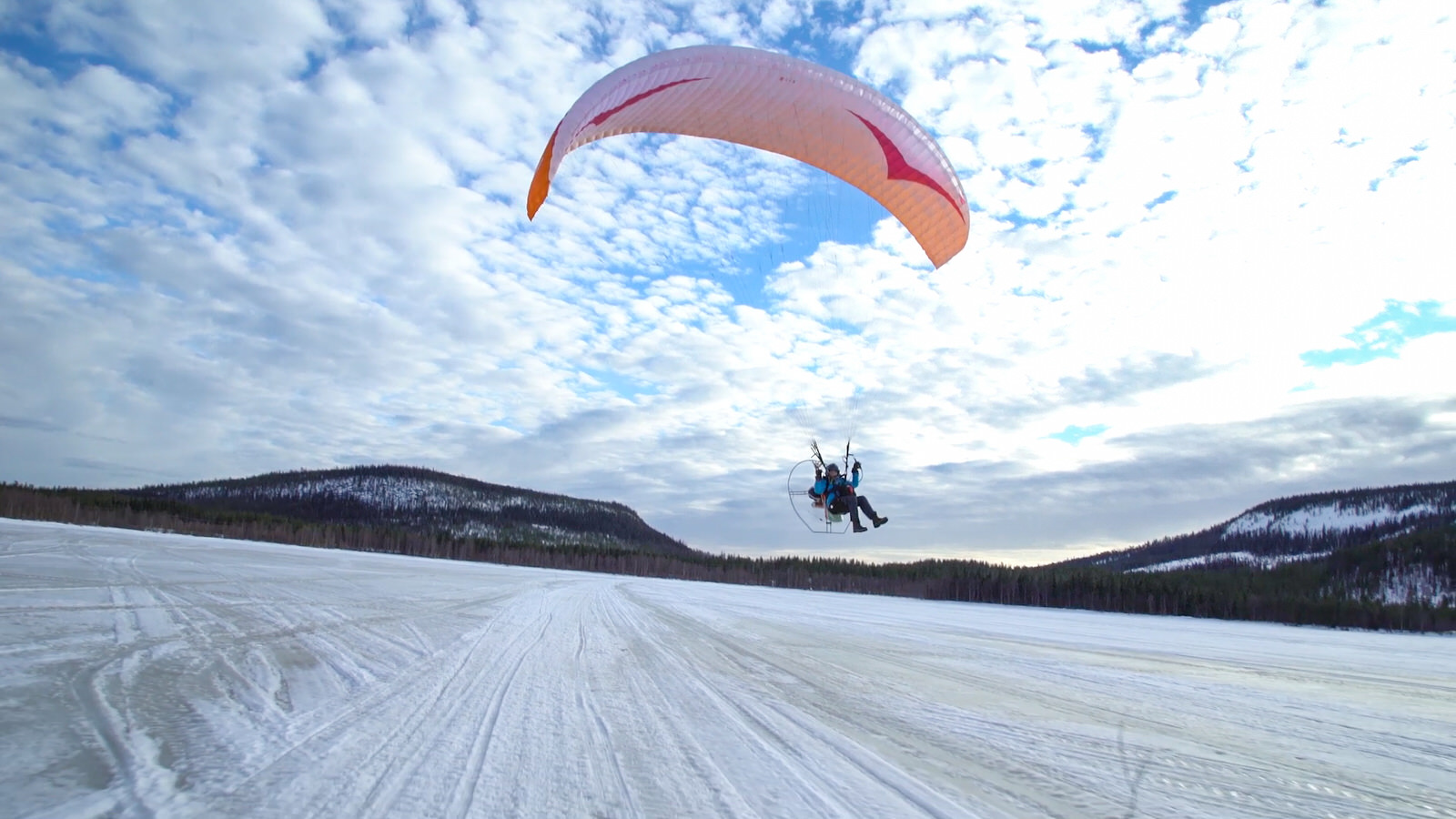'Human Swan' Trails Endangered Birds on Epic 4,500-Mile Migration

Tens of thousands of endangered Bewick’s swans leave their breeding grounds in northern Russia every fall, heading south for milder wetlands across the northwest of Europe where they can wait out the winter. Late last year, as the days on the Russian tundra grew shorter and groups of swans began to take wing for the annual migration, a bird of a different feather set out with the flocks on their route to the south — a human scientist, piloting a paraglider.
Australian-born biologist Sacha Dench, dubbed the “Human Swan”, set out in mid-September 2016 to track the migration journey of the birds from the remote Nenets region of Russia's northwestern coast, inside the Arctic Circle.
Flying a paramotor — a foot-launched paraglider equipped with a motorized propeller — Dench took advantage of her bird's-eye view to document the swan migration for its entire length, 4,500 miles (7,240 kilometers) south and west through 10 countries in Europe to the west of England, where she arrived in mid-December after a three-month journey. [See Photos from the "Human Swan's" Three-Month Journey]
Dench told Live Science her aim was to learn about the environmental threats that the birds face along their migration route, and to highlight a campaign to protect their wetland habitats led by the Wildfowl and Wetlands Trust (WWT), the conservation charity in the United Kingdom where she is the head of media production.
She explained that she always stayed a safe distance from the flying and resting swans she encountered during the journey, but she was sometimes able to fly beneath large flocks in a high "V" formation.
"They just ignored me, which is a great thing. I wouldn't kid myself that they accepted me — I just didn't look like a threat to them," she said.
For the first 370 miles (600 kilometers), the migration route took Dench across remote parts of the Russian tundra without roads or human settlements, accompanied by two support crew in a microlight aircraft.
Get the world’s most fascinating discoveries delivered straight to your inbox.
The fliers were joined later in the journey by a ground team that included scientific researchers and hundreds of volunteers from communities along the swans' migration route, through parts of Finland, Estonia, Latvia, Lithuania, Poland, Germany, Denmark, the Netherlands, Belgium and France.
Human threats
Dench endured frequent bouts of bad flying weather as the European winter set in during the three-month voyage, including heavy snow and thunderstorms, and at one point she suffered a dislocated knee after stumbling during a takeoff near St. Petersburg in Russia.
In early December she became the first woman to cross the English Channel by paramotor, and on December 16 she completed her migration journey when she landed at WWT's headquarters at Slimbridge in Gloucestershire, a wetlands reserve about 120 miles (200 km) west of London, where thousands of Bewick's swans spend each winter.
The number of Bewick's swans making the annual migration from Arctic Russia to northern Europe has fallen sharply in recent years, from around 29,000 birds in 1995 to around 18,000 in 2010, according to research by WWT and other conservation groups across Europe. Illegal hunting and the draining of wetland habitats for use as farmland are thought to be the main threats to the swans. [Top 10 Most Incredible Animal Journeys]
"A lot of the problems involve people," Dench said. "We need to somehow get through to the farmers, hunting associations and politicians in each country, and we have to do this across quite a lot of different countries — so we've got quite a challenge."
By flying the same route as the migrating swans, Dench and her research team were able to make first-hand observations about why fewer swans are surviving the migration each year.
Using a paraglider allowed Dench to document the many different landscapes encountered by the swans along their migration route, and to record the numbers and behaviors of swans resting at "stopover" sites in major wetland areas along the way, she said.
Flight of the swans
The expedition also focused on the travels of five swans — nicknamed Leho, Maisie, Eileen, Hope and Daisy Clarke — that were fitted with GPS-tracking collars during earlier migrations to the south, Dench said.
Live maps of the movements of the tracked swans over the migration period were published on the project's website, so birdwatchers and other conservation volunteers in each country could look for them and report any sightings through social media, she said.
Dench said that the Bewick's swan is an iconic species for the WWT, whose founder, the British ornithologist and conservationist Peter Scott, was the first to note that individual Bewick's swans could be identified by the markings on their beaks.
"So we now know individuals and families, and we've been tracking some of them for decades — we know exactly how many cygnets they've had in their entire life, and how dominant they are, and all the rest of it," she said.
That historical data could now be placed in the context of the information gathered about the migration route, she said.
The paramotor expedition brought together hundreds of scientific researchers and conservation volunteers across Europe, she said, and helped to promote the WWT’s online petition for measures to protect Bewick's swans, such as restoring lost wetlands and preventing illegal hunting along the migration route.
Dench said the expedition was also a rare chance for researchers from the swans' southern range to learn more about their remote breeding grounds in Arctic Russia.
"I would go back and fly again over the tundra in a heartbeat," she said. "From the air, as far as you could see, there is no sign of human beings, and that's really quite rare. It was absolutely stunning."
Original article on Live Science.
Tom Metcalfe is a freelance journalist and regular Live Science contributor who is based in London in the United Kingdom. Tom writes mainly about science, space, archaeology, the Earth and the oceans. He has also written for the BBC, NBC News, National Geographic, Scientific American, Air & Space, and many others.


